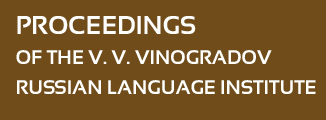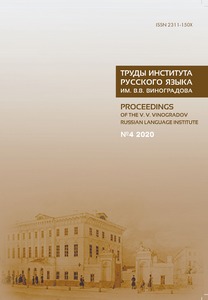BORROWINGS IN THE DIGITAL SOCIETY LANGUAGE
Abstract:
The article examines the composition of borrowed vocabulary in the terminology of the digital society. Among the nominations of this terminology, approximately 60% of the units are the result of various forms of borrowing, which is explained by an extralinguistic reason (leadership in the field of digital technologies of another country). At the same time, borrowing ensures the internationalization of scientific vocabulary. Secondary borrowings play a special role in this process. The author provides data on each form of borrowing: direct, graphic and secondary. In the Russian language there are cases of consolidation of nominations going back to the same word in the source language as a result of direct borrowing and calque; calque and inclusions; calque and half-calque. There is also a noticeable competition of graphic variants of the same foreign language unit (IT — ИТ), which indicates the unstable nature of terminology and the activity of the nominative process in this area. The study establishes an important feature of the process of new words entering the Russian language, which is related to the exceptional position of the English language as a source language: An Anglicism is increasingly entering target language as an element of the formal semantic paradigm, rather than a single sign.


